Are you looking for an effective way to communicate your physical therapy progress? In today's fast-paced world, keeping track of your rehabilitation journey can be daunting, but a well-structured progress report can make all the difference. This letter template not only helps you outline your advancements but also highlights areas that may need more attention, ensuring a collaborative approach to your recovery. Ready to dive deeper into the essentials of crafting the perfect progress report? Let's explore more!
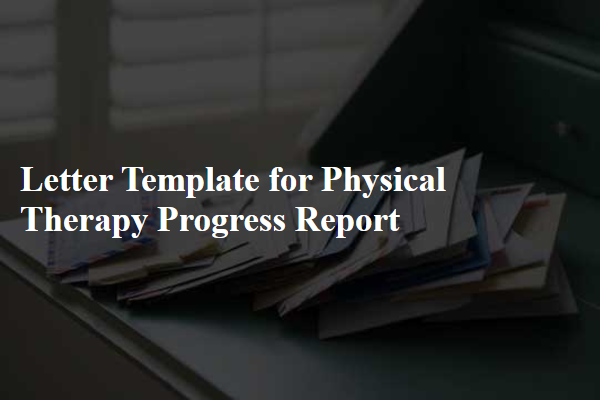
Patient Information
Patient information is essential in a physical therapy progress report, including personal details and medical history. Key elements include the patient's full name, date of birth, and contact information, which facilitate proper identification and communication. The medical history may encompass previous injuries, surgeries, and relevant diagnoses, such as osteoarthritis or post-surgery rehabilitation details. Therapy commencement date along with the specific treatment goals, for instance, increasing range of motion or pain reduction, should also be documented. Additionally, progress assessment data, including measurements of strength (quantified in pounds), flexibility (degrees), and pain levels (rated on a scale from 1 to 10), provide quantifiable insights into patient improvement or setbacks.
Treatment Goals
The physical therapy progress report outlines the treatment goals targeted at improving a patient's rehabilitation journey. Specific objectives include enhancing muscle strength in affected areas, such as the quadriceps (targeting 25% increase in strength within eight weeks), regaining range of motion in joints, particularly in the shoulder, achieving at least 90 degrees flexion by the next assessment, and reducing pain levels, aiming for a decrease from a self-reported 7 to 3 on a scale of 10. Additionally, the report emphasizes increasing functional mobility through gait training, with an expected improvement in walking distance from 300 meters to 500 meters without assistance by the end of the therapy program. Regular evaluations every two weeks will measure these progress metrics, ensuring the therapy remains aligned with the patient's dynamic recovery requirements.
Progress and Outcomes
The physical therapy progress report reflects significant improvement in the patient's mobility, strength, and pain levels following a structured rehabilitation program. Patient assessments indicate a 30% increase in range of motion in the right knee joint since the initial evaluation on September 10, 2023, resulting from targeted exercises aimed at enhancing flexibility and stability. The manual muscle testing scores reveal a steady gain in strength, transitioning from grade 3 to grade 4 within six weeks, highlighting the effectiveness of resistance training protocols implemented during sessions. Patient-reported outcomes demonstrate a reduction in pain levels from an initial score of 7 out of 10 to a current score of 3, indicating progress towards functional independence. Engagement in daily living activities has notably improved, with patients now able to ascend and descend stairs without assistance, marking a key milestone in the recovery process.
Modifications and Adjustments
Modifications during physical therapy sessions significantly impact the patient's recovery trajectory and overall experience. Specific adjustments to exercise intensity, such as reducing weight loads by 30% or increasing repetitions by 10, cater to individual needs and capabilities, promoting safety. Variation in manual therapy techniques, including myofascial release and mobilization, addresses unique musculoskeletal issues, enhancing pain relief. Incorporating assistive devices, such as resistance bands or balance boards, supports engagement while improving functional stability. Adjusting the schedule to include more frequent sessions, like bi-weekly appointments instead of weekly, can foster quicker progress by allowing considerations for individual responsiveness to treatment. Recording these modifications effectively communicates treatment plans, ensuring optimal patient-centered care at facilities like local outpatient centers or specialized rehabilitation clinics.
Future Recommendations
The future recommendations for improving patient outcomes in physical therapy include a tailored exercise regimen focusing on strength-building activities, such as resistance training, specifically targeting areas like the lower back and legs, crucial for mobility enhancement. Regular assessments every four to six weeks can help in adjusting treatment goals based on patient progress. Incorporating advanced modalities like ultrasound therapy or electrical stimulation can assist in pain management and expedite recovery in conditions such as tendonitis or arthritis. Encouraging adherence to a home exercise program, ideally scheduled five times per week, can reinforce gains made in clinical sessions. Collaborating with multidisciplinary teams, including nutritionists and orthopedic specialists, should be considered to offer a holistic approach to rehabilitation. Follow-up appointments, ideally at a local rehabilitation center such as the XYZ Wellness Center, should be scheduled to ensure continuity of care and monitor patients' recovery journey effectively.


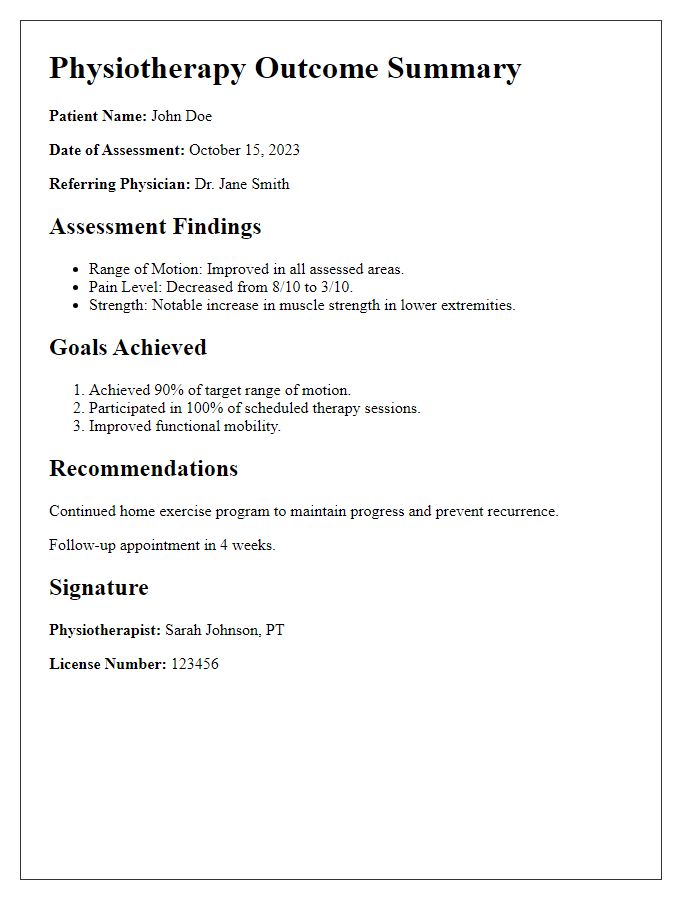
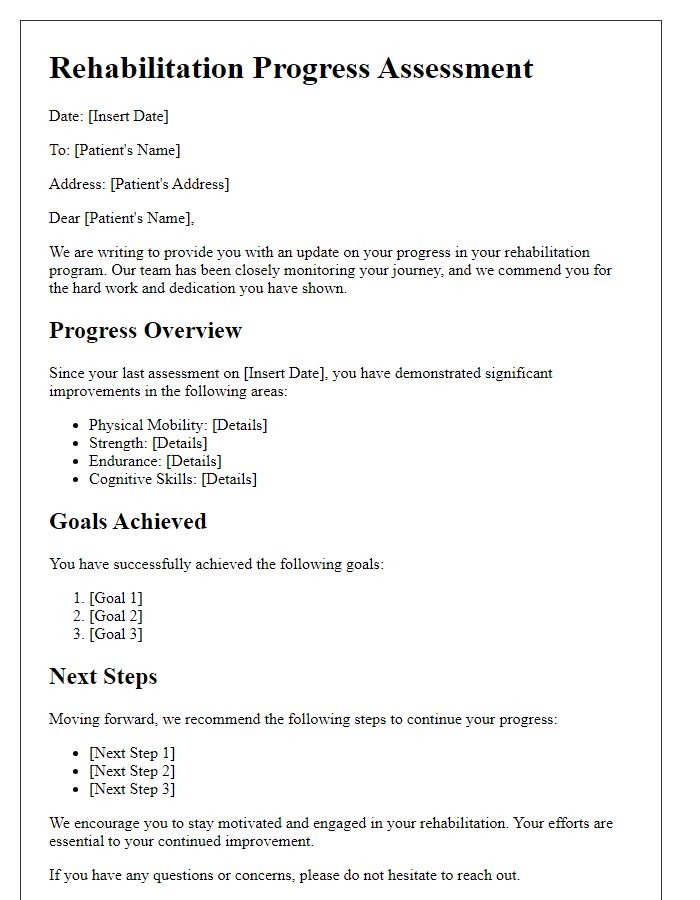
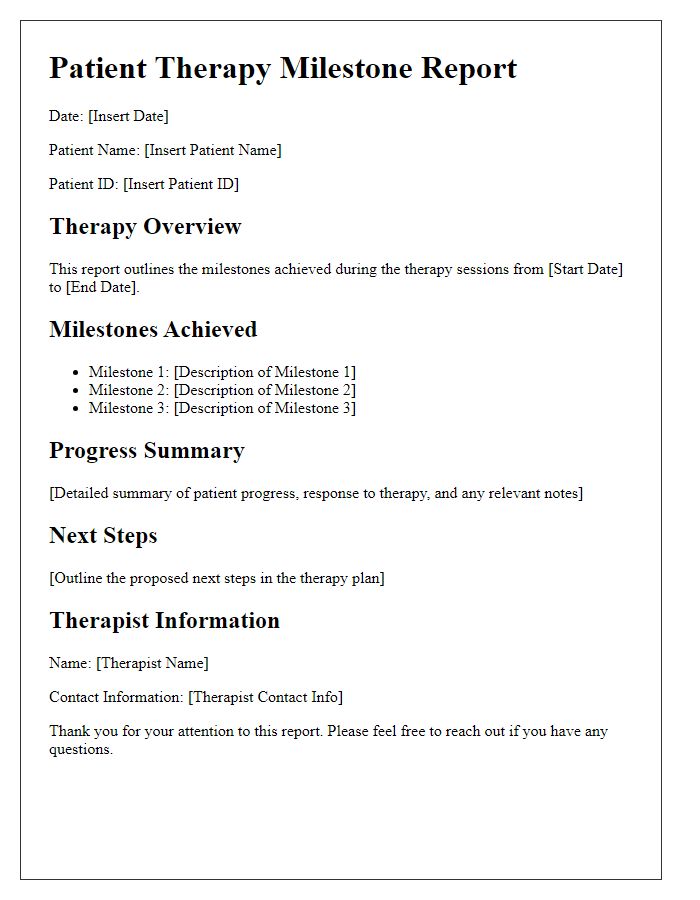
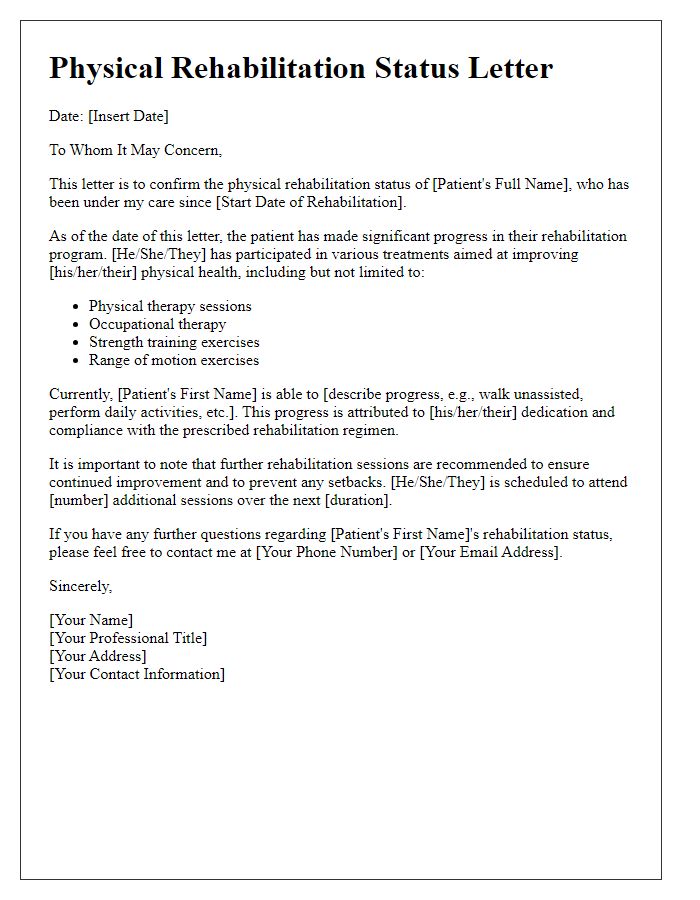
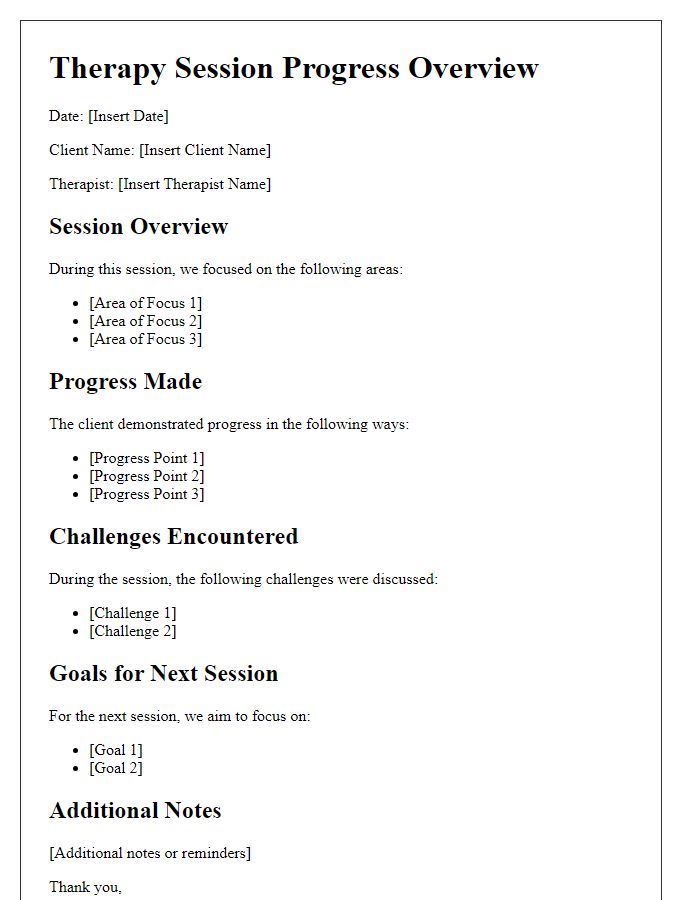
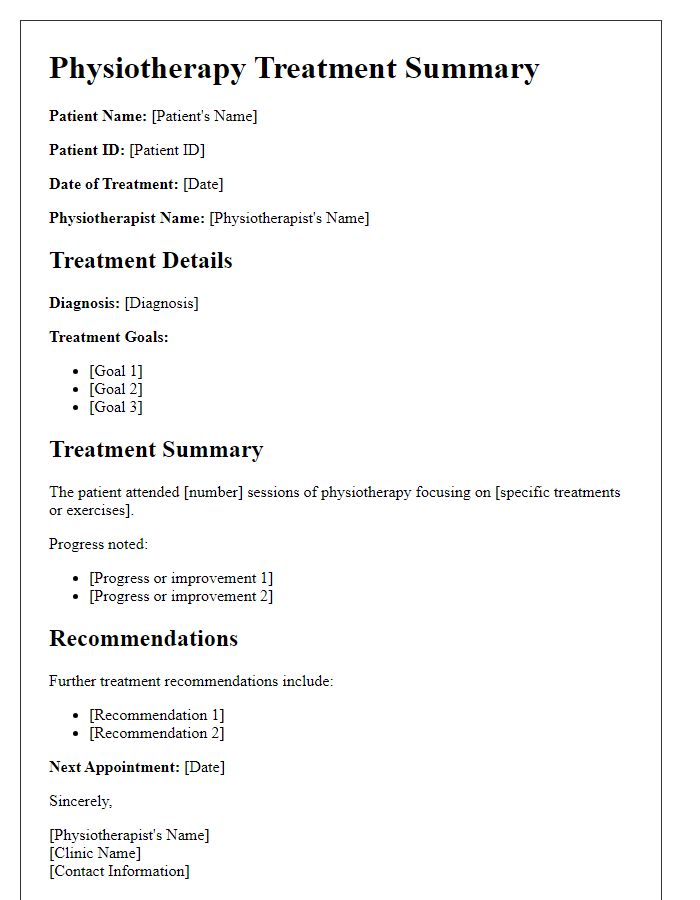
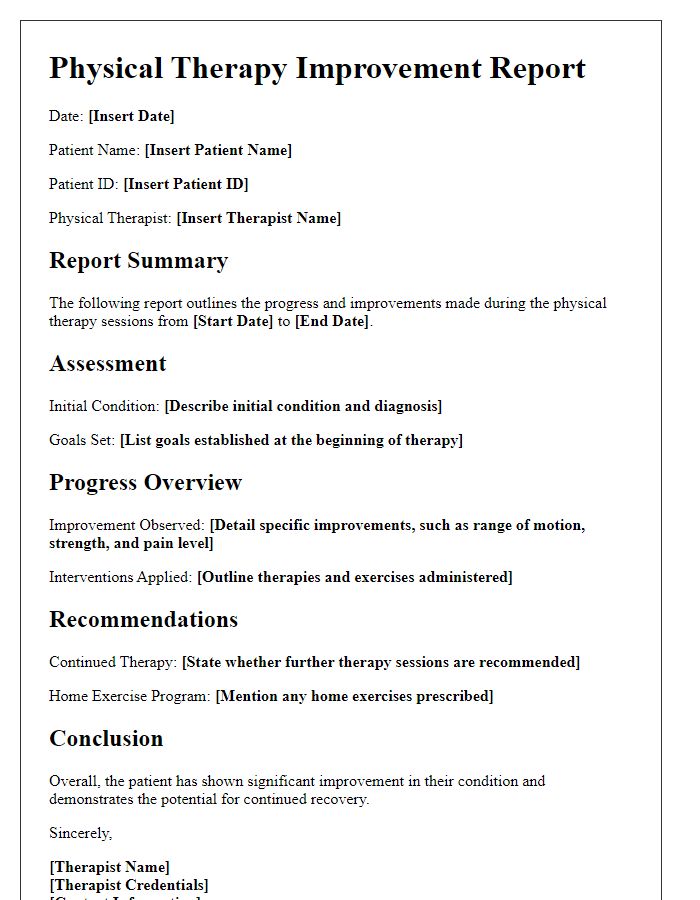
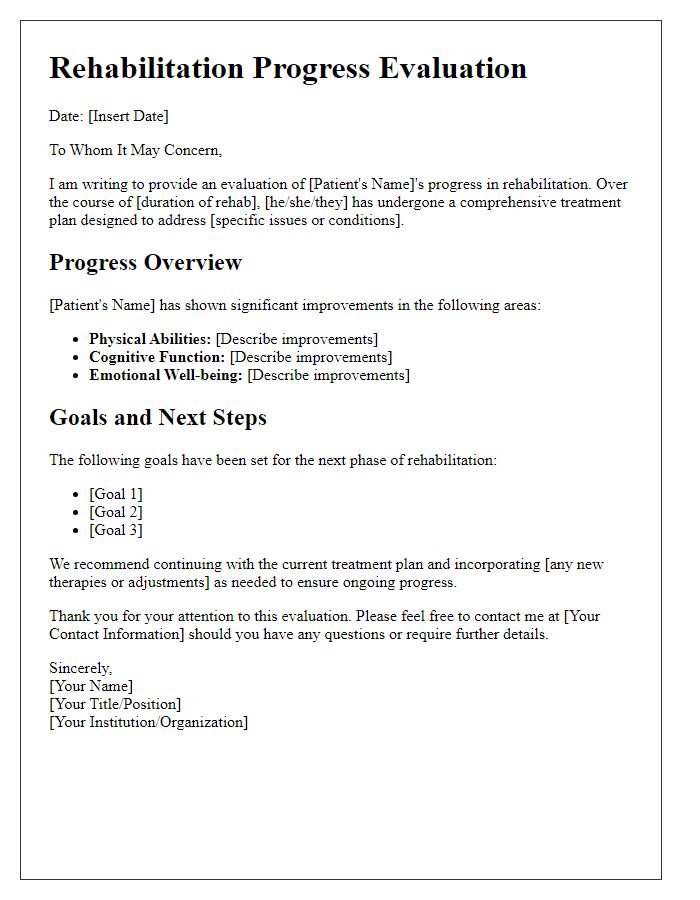


Comments